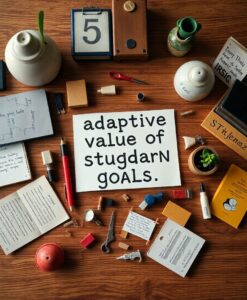Thinking about goal commitment as an adaptive feature shifts how we design decision-making systems. If selection and implementation depend on different algorithms, then machines and therapies could be built to separate picking what matters from the work of staying on course. That separation helps explain why some strategies falter when feedback is sparse and why monitoring systems need to compare current goals with alternative rewards.

These ideas matter for human growth and inclusion because problems with goal persistence underlie everyday struggles and many mental health conditions. Understanding the mechanisms that lock people into or free them from goals points toward tools that support flexible ambition, reduce harmful fixations, and widen access to environments where effort leads to payoff. Read on to see how this framework links basic computation to real-life resilience and possibility.
Humans exhibit a striking tendency to persist with chosen goals. This strong attachment to goals can often appear irrational – a perspective captured by terms such as perseverance or sunk-cost biases. In this review, we explore how goal commitment could stem from several adaptive mechanisms, including those that optimise cognitive resources, shield decisions from interference, and scaffold motivation in the absence of accessible reward signals. We propose that these computational considerations have important implications for algorithmic architectures supporting decision making, including separate algorithms for goal selection and implementation, and for monitoring ongoing goals versus alternative sources of reward. Finally, we discuss how a variety of mechanisms supporting goal commitment and abandonment could relate to dimensions affected in mental health.

